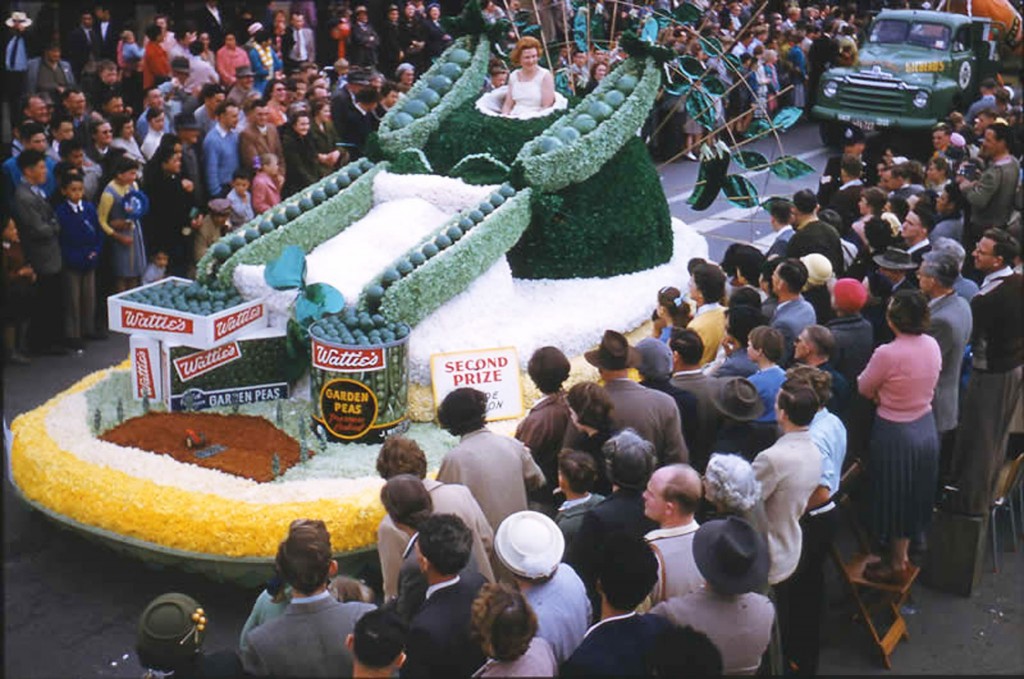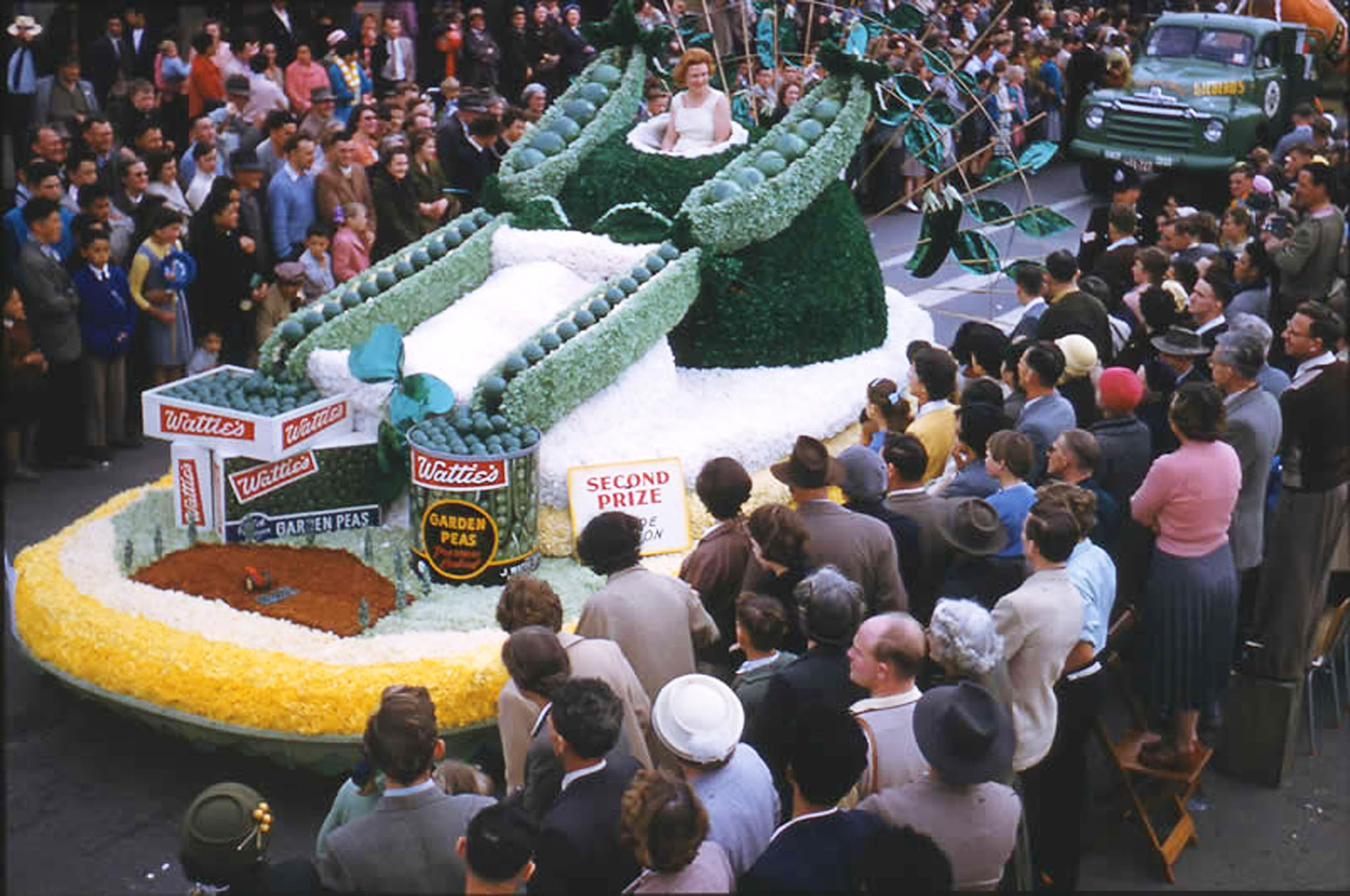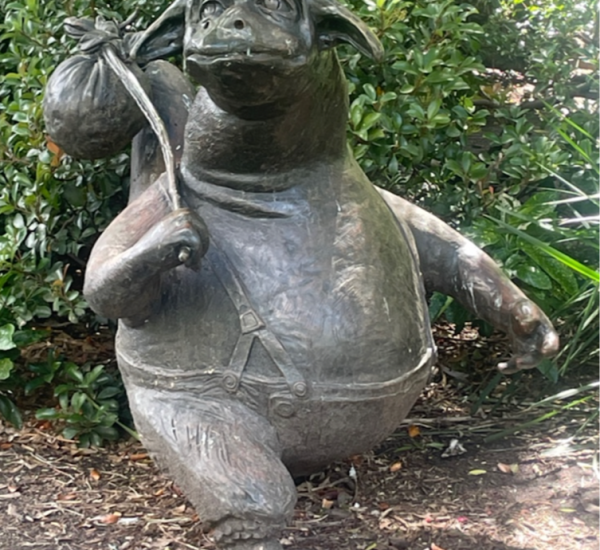While the focus of most of us interested in controlling sprawl is centered with wide-eyed horror on Auckland and it’s never-ending appetite for land and motorways, it’s not the only place that is suffering from sprawl.
Hastings, the sunshine town of the Bay, the shining apple in the fruit bowl of New Zealand, the radiant centre of the wine region of Aotearoa’s finest concoctions of fermented grape juice, has long been accoladed with such shining epitaphs. It used to hold an annual Blossom Festival in the 50s and 60s, which some are trying to bring back. It used to be the wealthier sister city to Napier, as it was the centre of all things farming, and the Hawkes Bay sheep farmer was God, buying a new Ford Falcon with all the trimmings every year, and a new John Deere every second year with the cheque from the Wool Board. It used to be the centre of a thriving industry around sharing those sheep, with the centre of town being the giant Omahu Rd stockyards, sheep sales every Tuesday, in which to purchase your furry, wooly, bundle of grass-eating joy. The flip side of that was that it used to also be the centre of the sheep-slaughtering freezing works, with the vast Tomoana works accounting for a chillingly high percentage of all sheep bound for England in frozen form. It used to be home to a large Maori population of high-earning working class, and it used to be better than Napier.

All that has changed. While Napier has discovered and milked its Art Deco heritage, and Hastings (with the same amount, having been destroyed in the same 1931 earthquake) having largely ignored theirs, Hastings has gone downhill. Napier has become the shopping town, and the big spending farmers of Hastings has been replaced by the cruise liner spenders anchoring at the Port city. The stockyards at Hastings have rotted away, and big shed retailing has taken off in Hastings, with the poor deluded townsfolk even selling off their local sports ground central city park, to make way for a new big box barn lot of Warehouse, Mitre Ten, and acres of car park. The freezing works of Tomoana have long since closed down, sitting empty except for David Trubridge’s light works taking up one tiny corner. The high-earning maori and pakeha have been replaced by low-income welfare beneficiaries, and the money has fled east to Havelock, nor-east to Napier, or nor-west to Auckland. It is a large town, but a pretty sad one. Two large patched gangs are strongly resident in the town: shops are largely empty, closed down, or on the edge of final financial oblivion. On the plus side, Hastings does still have New Zealand’s finest weekly Farmers Market, with the pick of the produce of the bay on sale. The raison d’être of Hastings is still the Fruit bowl of New Zealand.
It’s therefore even sadder to see the latest proposal to hit the town is to potentially expand their untidy sprawl and grow some more suburban dross. The land is for sale at the moment, advertised with the potential to destroy more productive apple-growing orchard land and replace it with more middle income, middle of the road, suburban dross.
Without the apple orchards, and the abundant rich soil of the Bay’s three great rivers that have flowed though the region for millennia, flooding the Heretaunga Plains with loamy goodness and providing Hawkes Bays most fertile paddock land on which to build those orchards, Hastings would never have happened. Napier has always been built around the Port, since the earliest days of its Pakeha existence, and the same with the Maori settlements before. But Hastings is a relatively recent existence, centering around a simple crossing between the road from Havelock and the route of the train tracks. Like any random train track crossing, it grew into a crossroads town, and grew again from there, centering around that rich soil and the riches that grew from it.
But for it to sprawl and sprawl, unfettered, even when it is declining in purpose, eating it’s own very reason for existence, is a sad end indeed.
There are parallels. Los Angeles used to be the orange growing district of California, famous for the smell of the orange blossom hitting you in the face as you drove over the hills on your immigration west. Steinbeck wrote of it in The Grapes of Wrath, vividly capturing the reason and the journey of the great trip west. Now, of course, it’s just the smell of petrol that assaults your nose as you near the city of Angels. Is that progress? Yes, of course it is, and in 100 years LA has gone from being an orange growing orchard centre to being a city of many million, the largest human conglomeration on the planet, that rich LA soil paved over under the asphalt, even the rivers safely concreted underground in parts.
But is Hastings going to be a centre of growth? Or is the Hastings suburban sprawl just like a growing cancer, malignantly taking over perfectly healthy ground in a search for suburban dross? If Laurence Yule is listening (Mayor of Hastings), I’d say No to any more orchard land being replaced by suburbs. Hastings needs to grow up, not grow out.





4 hectares divided by 50 lots means 800 square metre sections LESS ROADS. Backing onto the Expressway. Ugh, that would be horrid. What is wrong with people?
It’s happening in Levin too. A lot of the prime (and I mean superb horticultural land around the outskirts of Levin is being gobbled up by *shudder* lifestyle blocks.
All these cashed-up boomer numpties are going to do is chuck a few llamas on it, instead of a crop of potatoes or some such staple food. Makes me sick.
Where do we draw the line?
Auckland Council has just voted against strong constraints I see, paving the way for yet more sprawl. Nimbyism rules!
Who got to whom that exceptional horticultural land in Hastings is being lost to subdivision. The Hastings District Council has won appeals in the Environment and High Courts (eg McKenna v Hastings DC)when it has blocked residential development on productive land.
One of the reasons Flaxmere was built where it is back in the late 60s/early 70s is because the old Hawkes Bay County Council refused to give Hastings city the valuable orcharding and horticultural land around the city boundaries, and instead offered the “useless” river shingle area. The New Right/Roger Douglas et al 1989 amalgamation that formed a District Council with a mostly urban electorate and urban based council members making decisions that affect some of NZ’s most fertile rural land was a huge mistake.
Jingyang, interesting info on Flaxmere, thank you. I think it is now one of New Zealand’s worst / poorest suburbs, with massive unemployment problems, presumably ever since the likes of the freezing works have closed down. They should, perhaps, just close it down, take it away, raze it to the ground, and plant grapes – that “useless” stony soil is perfect for viniculture.
@Jingyang, Maximus,
According to this report,
http://www.health.govt.nz/system/files/documents/pages/flaxmere-town-centre-urban-design-hia.pdf
A chunk of the problem lies with the cross-lease intensification the HCC allowed in the 80s, which basically created the very little separation of houses that currently exists,
As an aside about 60% are owned, 30% private rentals and 10% Houseing NZ
Interesting report greenWelly, thanks for that. As it says:
“In the eighties a government scheme was implemented to assist people on low incomes to buy their own homes in Flaxmere, however people on low incomes could only afford cheap substandard homes. It has been suggested that a root cause of Flaxmere’s social problems was a previous council decision to allow low cost housing to be built in such high concentration (McLeod 2001). The pattern of housing development has also encouraged the development of second houses on properties, often without consideration of amenity or robust design or construction. Hastings District Council allowed cross-leasing of the sections which enabled compact development of housing (McLeod 2001). This type of intensification should be distinguished from planned housing intensification where buildings are designed to accommodate more people, as opposed to fitting more houses onto small amounts of land.”
That’s a key phrase to me – ie low cost housing in high concentration = social problems = another word for slum. The almost laughable “Town Centre” in Flaxmere is just hanging on by the skin of their teeth – not particularly conducive to running a business there when you are repeatedly the subject of crime and vandalism and arson. Which is sad since they are doing this to their own community.
Of course, the planned new subdivision is not intended to be in any way connected with Flaxmere, and in fact I’m not trying to get down on Flaxmere at all – I’m sure it has its good points even if Urban Design is not one – but the best article in favour of the flavour that is Flaxmere is this:
http://theovercoatofnewzealand.wordpress.com/2013/07/24/an-insiders-guide-to-tourism-in-flaxmere/
Even the locals agree – see the comment from one Raun Makirere-Haerewa who says:
“Bro who ever you are you are the man what a way to protray the beauity of Flaxmere to the world shot kuz.”
Seamonkey, I remember an article in the Dompost a fair while back about that Horowhenua area where some local burghers paid a scientist to look into the gravels area up that way with a view to making it into the sort of wine country that the Gimblett Gravels is today – she seemed to think it was feasible and the best land use but I haven’t heard much since?
I’m sure someone on EOTF will be better informed
@60MPa,
Its well into production now, try here
http://www.ohaugravels.co.nz/
Their Pinot Gris is very nice
Thanks GW, good to see the land being used for something it suits best